Azure Cloud Discovery
Purpose
This article describes how to set up Microsoft Azure the App for Discovery on OUTSCAN.
Introduction
Azure Cloud Discovery enables Outpost24 to enumerate and import Azure virtual machine instances by querying the Azure API using provided credentials. It captures identifiers such as tenant, subscription, resource group, and any associated IPs, hostnames or MAC addresses, and applies import tags based on those attributes. This capability enhances visibility into Azure environments and ensures that dynamically changing infrastructure is reliably reflected within the vulnerability management system.
Prerequisites
Microsoft Azure account (Home - Microsoft Azure)
An application in Microsoft Entra ID (formerly Azure Active Directory) with the client secret credential created
Setup the App for Discovery in Azure
Create a Role
To discover resources, we must create a role in IAM, which is belongs to a subscription, you can read more about it in Organize your Azure resources effectively.
Go to the current subscription > IAM.
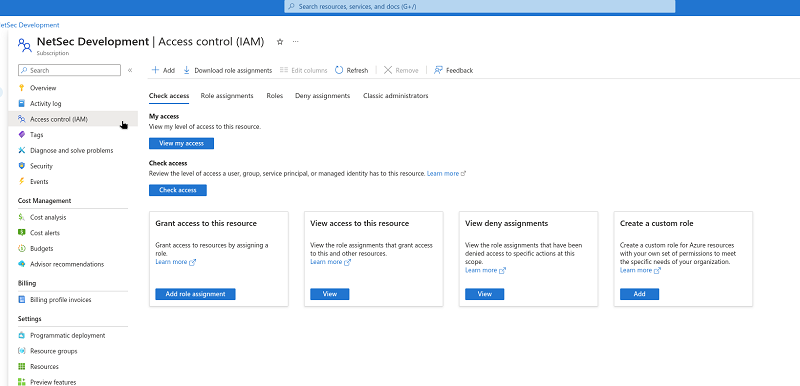
Click Add followed by Add custom role.
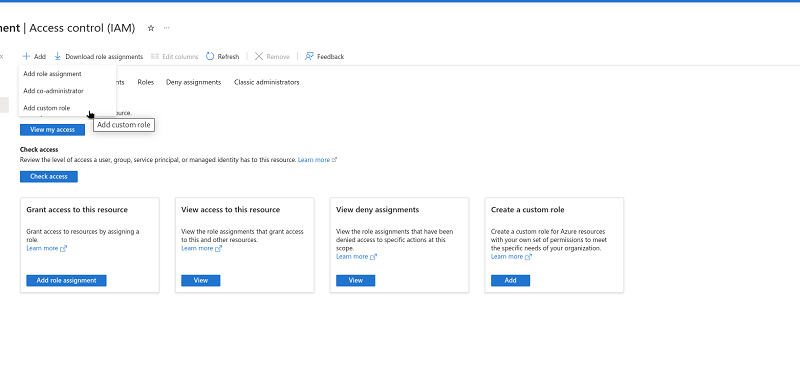
In Create a custom role, provide the JSON with the necessary permissions, replace your role name and your subscription ID.
Create a custom role
JS{ "properties": { "roleName": "<Your role name here>", "description": "", "assignableScopes": [ "/subscriptions/<Your subscription ID here>" ], "permissions": [ { "actions": [ "Microsoft.Compute/virtualMachines/*/read", "Microsoft.Compute/virtualMachines/read", "Microsoft.Network/networkInterfaces/read", "Microsoft.Network/networkInterfaces/*/read", "Microsoft.Network/publicIPAddresses/read", "Microsoft.Network/publicIPAddresses/*/read", "Microsoft.Resources/subscriptions/read", "Microsoft.Resources/subscriptions/*/read", "Microsoft.Network/dnszones/read", "Microsoft.Network/dnszones/*/read" ], "notActions": [], "dataActions": [], "notDataActions": [] } ] } }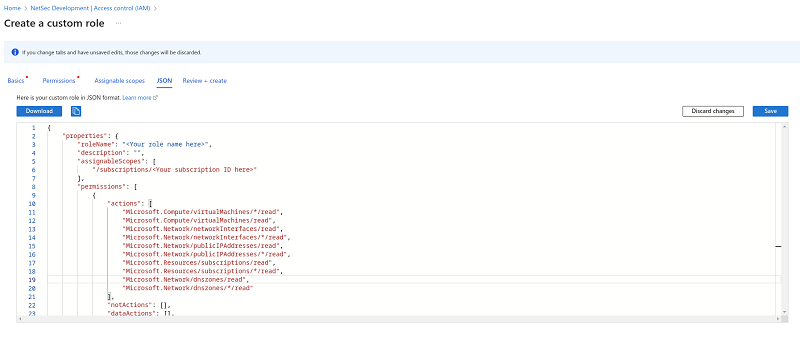
After saving the changes, press Review + Create and create the role with the necessary permissions.
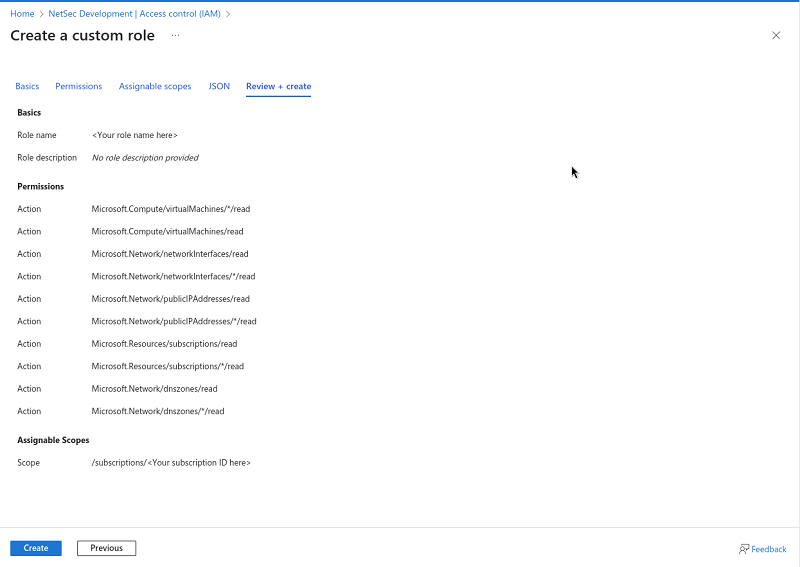
Assign the Role to the App
Go to the newly created role in Subscription > IAM > Add > Add role assignment.
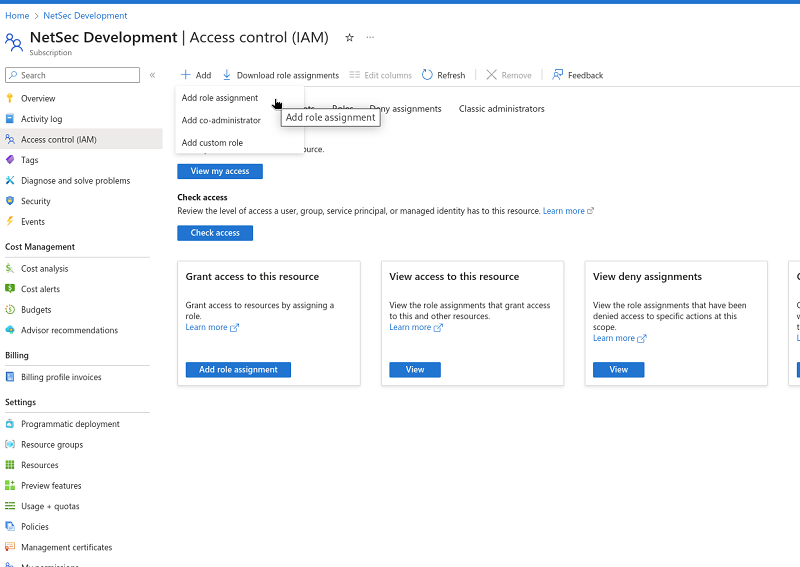
Filter by type Custom Role and select that role.
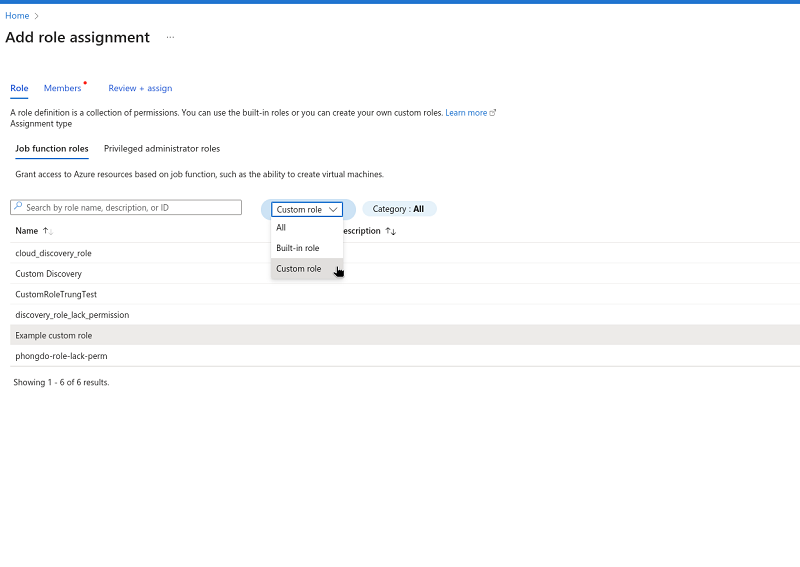
Select a member in Select members, which is the app name previously created.

Review + Assign to finish the process.
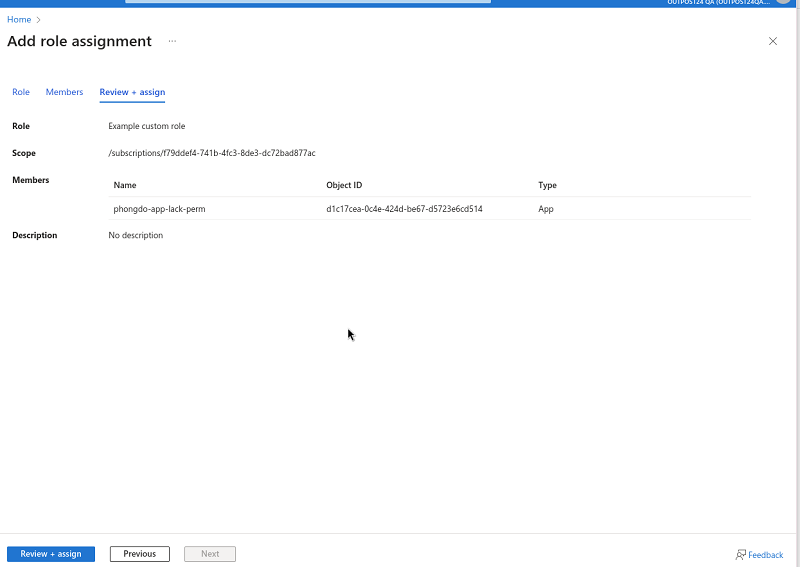
Create Azure credential in Portal
Obtain application’s information in Microsoft Entra ID > Applications.
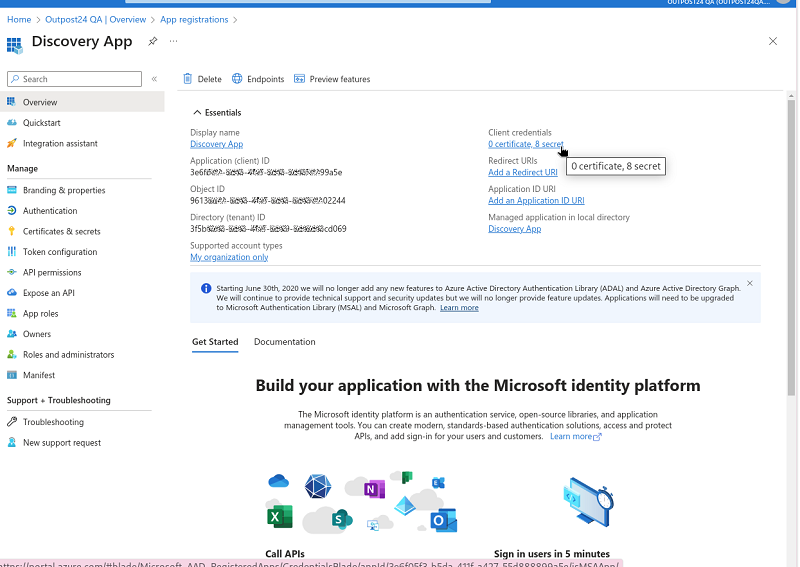
Fill it in the Portal’s new credential. See Generate Azure Credentials for more information.
In the drop-down menu select Microsoft Azure.
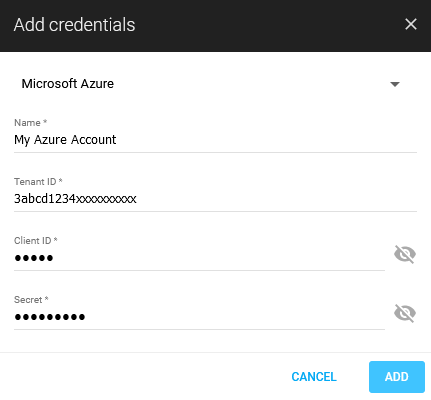
Add the Name of your Azure account.
Add the Tenant ID.
Add the Client ID.
Add the Secret.
See Steps to Find Azure Parameters in the Azure Console for reference
Click the blue Add button.
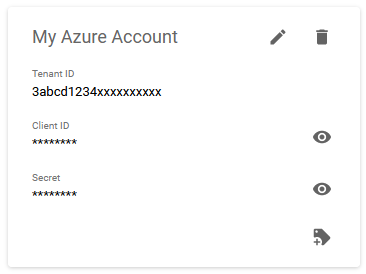
Run Discovery
Create a new discovery scan, with selected credential and perform the scan.
Create a scan configuration. You can provide subscription directly by input string inside input Subscriptions, or you can leave empty and trigger scan for the first time to get all subscription.
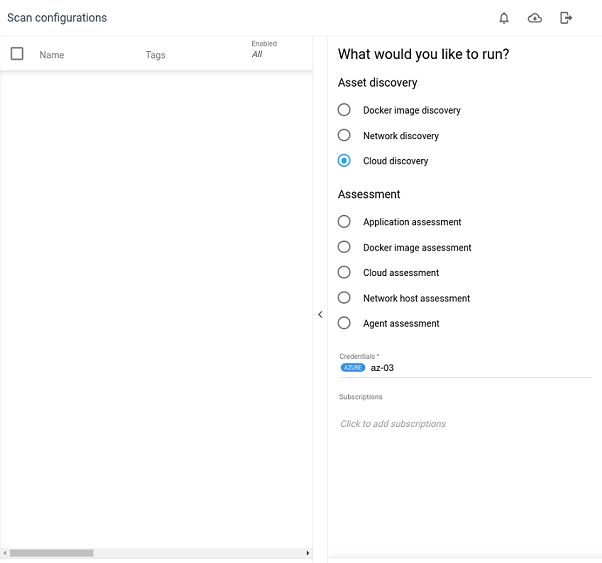
Click on the Scan icon to run the first time to get all the subscriptions.

Wait till the scan is finished.
🕘 …

Scan is running.
![]()

Scan is finished.
Go back to scan configuration and update scan configuration with subscription.
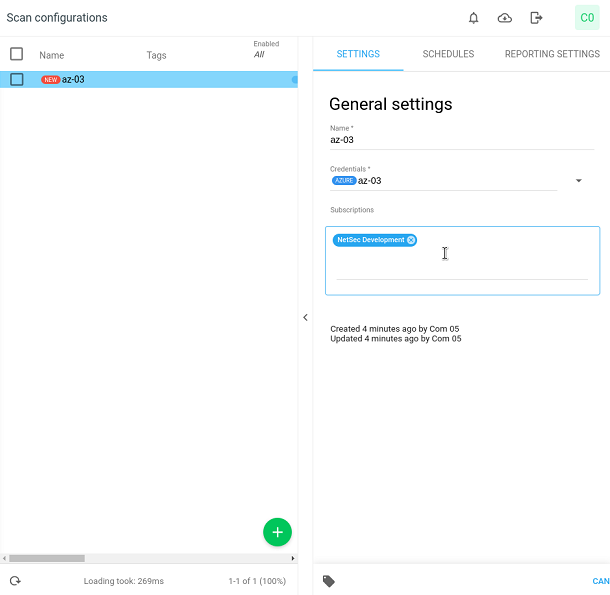
Click on the Scan icon to run the scan. Trigger the scan and wait till the scan is finished.
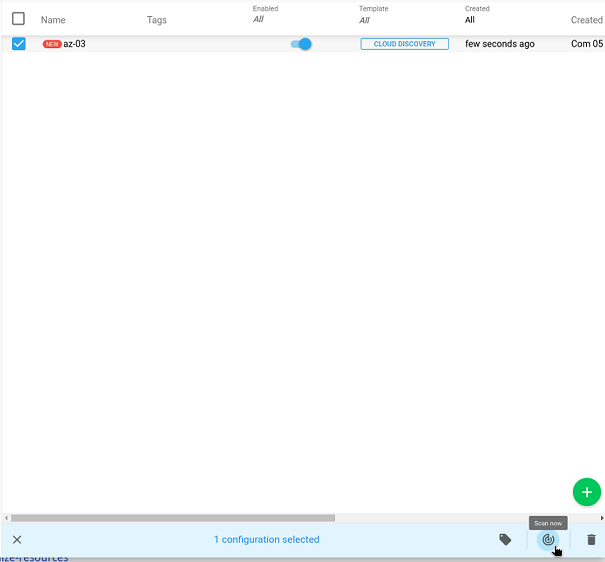
Wait till the scan is finished.
🕘 …

Scan is running.
![]()

Scan is finished.
Trouble shooting
Scan Ended with Issues
If the user lacks some permissions to scan against AZURE resources, the scan results will report an Issue.

Scan Ended with Failed
If the credentials for AZURE discovery is invalid, the scan results will report the scan as Failed.

Reference
Related Articles
Copyright
© 2026 Outpost24® All rights reserved. This document may only be redistributed unedited and unaltered. This document may be cited and referenced only if clearly crediting Outpost24® and this document as the source. Any other reproduction and redistribution in print or electronically is strictly prohibited without explicit permission.
Trademark
Outpost24® and OUTSCAN™ are trademarks of Outpost24® and its affiliated companies. All other brand names, product names or trademarks belong to their respective owners.
